Built by Others in an article series showing layouts constructed by modelers using plans and projects from the pages of Model Railroader and its associated products. The Soo Line Red Wing Division originally appeared in the December 1994 issue. In this installment on Cody Grivno’s Red Wing Division, MR’s senior editor shares how he adapted the HO scale track plan to model the Class I and shortline railroads in and around his hometown in northwest Minnesota.
Built by Others: Cody Grivno’s Red Wing Division
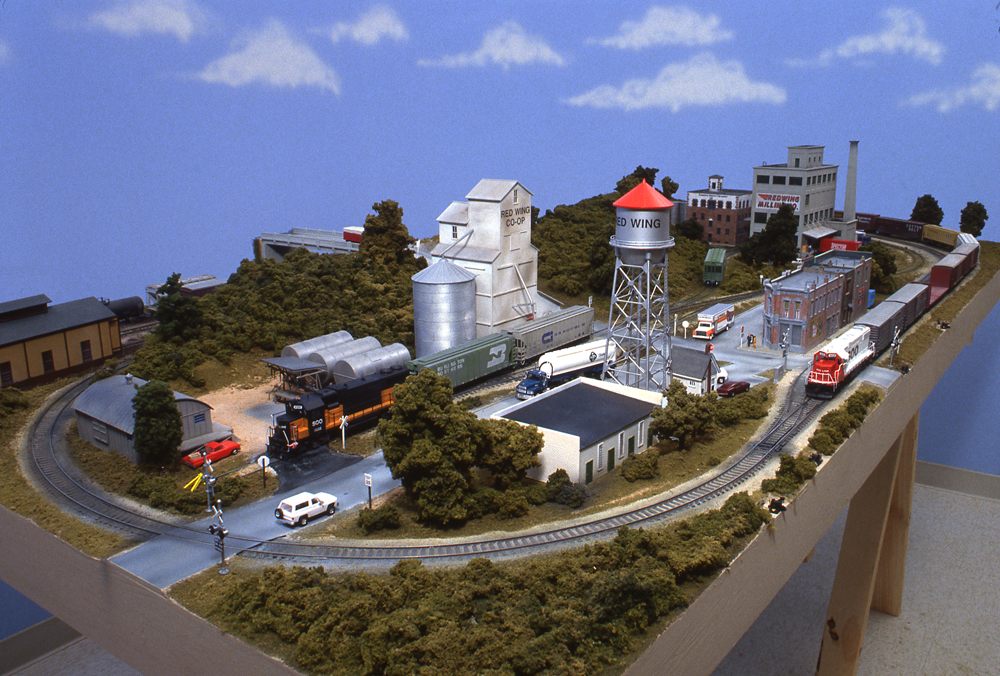
This probably doesn’t come as a big surprise, but model and prototype trains have been a part of my life as long as I can remember. One of the earliest layouts I had was an HO scale train set attached to a sheet of plywood. It had a Life-Like operating grade crossing (the one where the bottom of the horn-hook coupler pressed on the plastic crossing “planks,” causing the gates to lower.) To a young boy, this was pretty high tech.
Around 1984 or ’85, my dad, brother, and I briefly dabbled in N scale after I won a train set at Sundet’s Hobby Shop in downtown Crookston, Minn., my hometown. As I recall, the set had an Alco RSD-15 diesel that didn’t run particularly well. After that short-lived experiment, we returned to HO scale.
The Red River Valley Central era
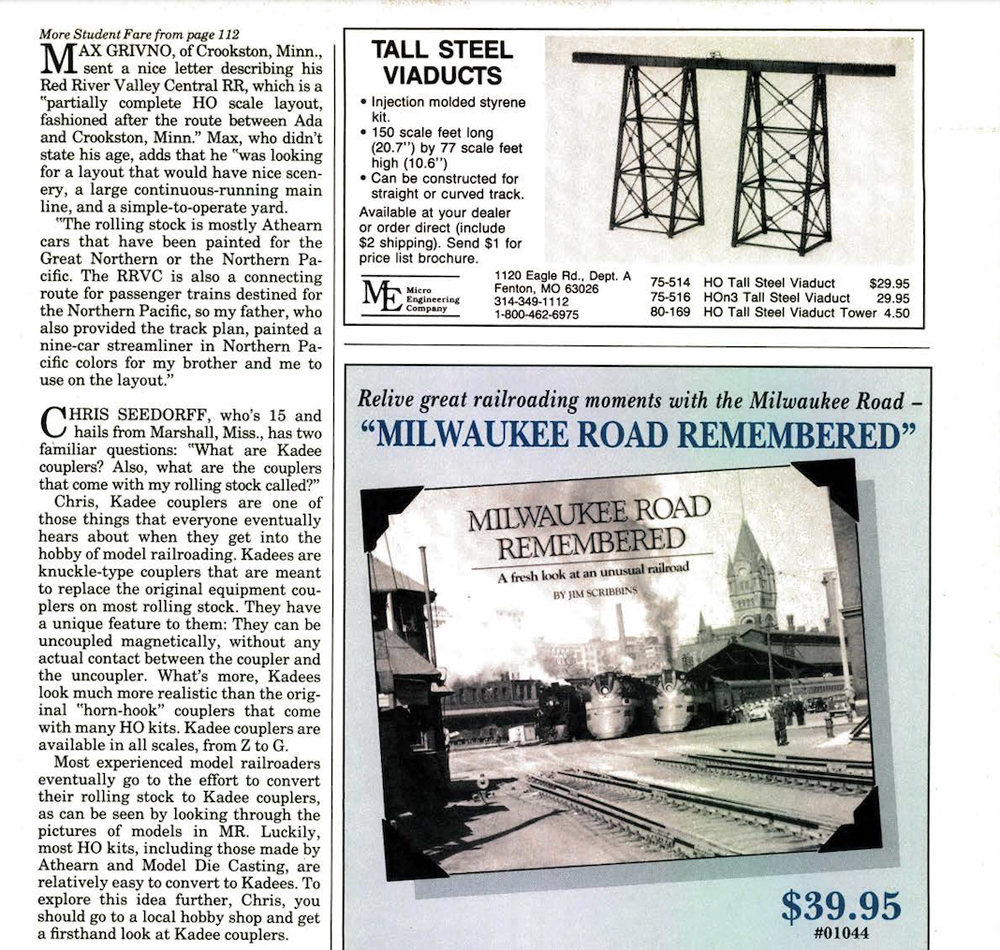
My brother and I had separate rooms in our three-bedroom ranch house. Since we didn’t have a basement, we decided to share a room and turn my bedroom into a dedicated layout space. In 1988, the HO scale Red River Valley Central (RRVC) was born. The around-the-walls layout featured a multi-track yard with an A.H.M. No. 5831 freight station, an Atlas No. 305 manual turntable, a Heljan No. 806 Grain Farmers Co-operative elevator, and a scrap yard. Our dad also painted a brick single-stall enginehouse (an A.H.M. or Life-Like building, if I remember correctly). Hillside Lumber Co., Atlas No. 750, was the lone non-rail-served industry on the model railroad.
Though our layout was set in northwest Minnesota, the equipment was a mishmash of off-the-shelf diesels and rolling stock decorated for Midwestern railroads. We had two Athearn Electro-Motive Division GP7s (one each in Chicago, Burlington & Quincy and Great Northern paint); a Chicago & North Western GP50; and whatever Burlington Northern and predecessor road freight cars we could find.
An unplanned change
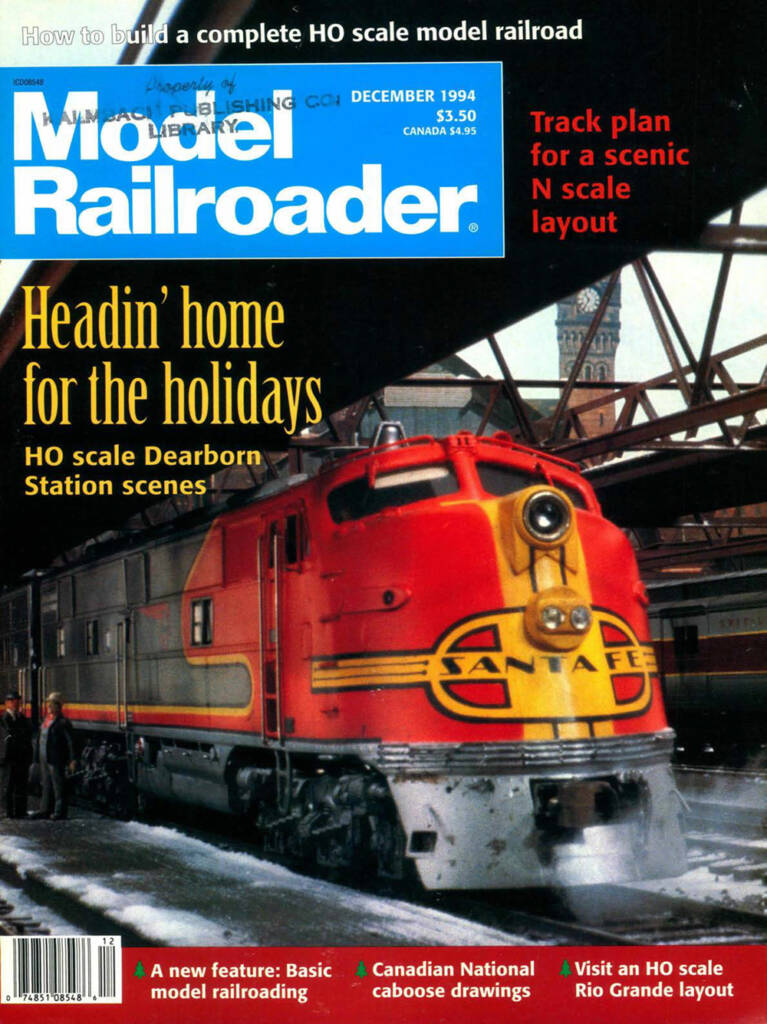
Little did I think a trip to the newsstand at Widman’s Candy Shop in downtown Crookston would change my modeling focus, but in November 1994 it did. That’s when the December issue of MR arrived at the store. The Santa Fe E unit on the cover was certainly striking, but it was the story on the HO scale Soo Line Red Wing Division that caught my eye. The 10-page article, starting on page 88, featured Soo Line units in the red-and-white and Milwaukee Road orange-and-black “bandit” schemes. I saw similar units on our occasional trips to nearby Thief River Falls, Minn. I was hooked.
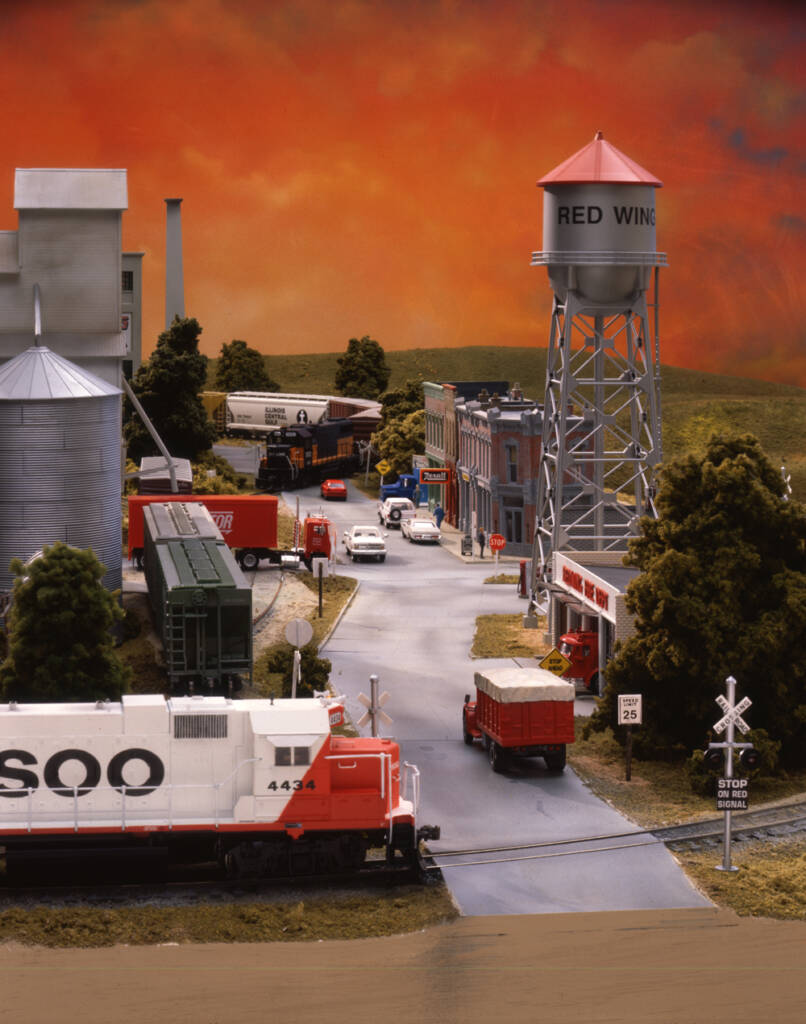
The opening spread of the story featured a vertical image looking down Red Wing’s main street. The left side of the scene featured a grain elevator and Red Wing Milling Co. The right side had a fire station, water tower, and some two-story brick buildings. The bandit GP38-2 was in the background switching the downtown industries, while the red-and-white Geep was on the main line. Scenes similar to this played out in many towns I visited throughout western Minnesota and eastern North Dakota during my childhood.
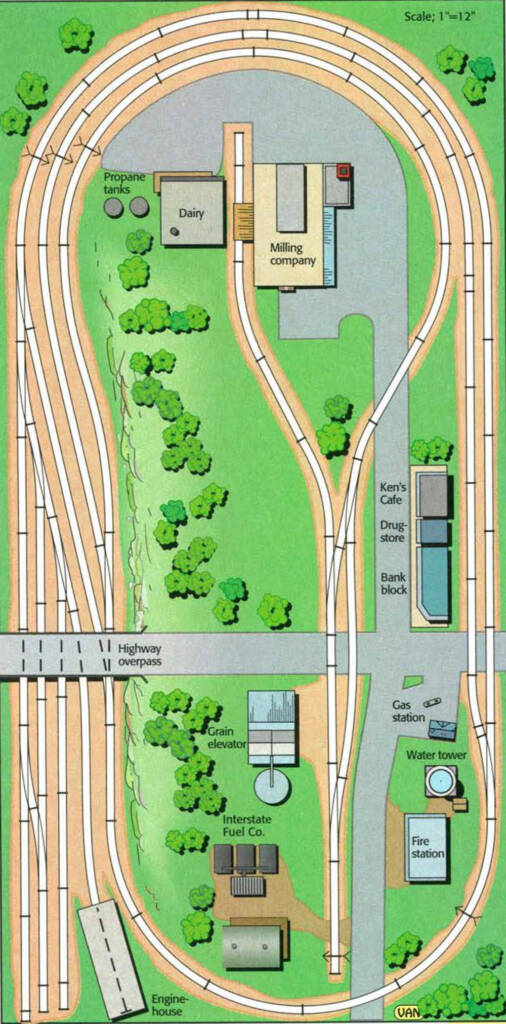
The illustration above shows the track plan published in the December 1994 MR. A rock-lined ridge divided the yard and enginehouse side of the layout from the industries and town scene. A highway overpass spanned the yard, providing some visual interest to an otherwise track-intensive part of the layout.
On the other side of the ridge were the rail-served industries and town buildings. The industries were a mix of American Model Builders, Life-Like, and Wm. K. Walthers kits. The non-rail-served businesses included buildings from Design Preservation Models, Heljan, and Woodland Scenics. A sidebar on page 97 of the article provided tips for detailing the DPM buildings used for the bank block, drug store, and cafe.
My take on Red Wing
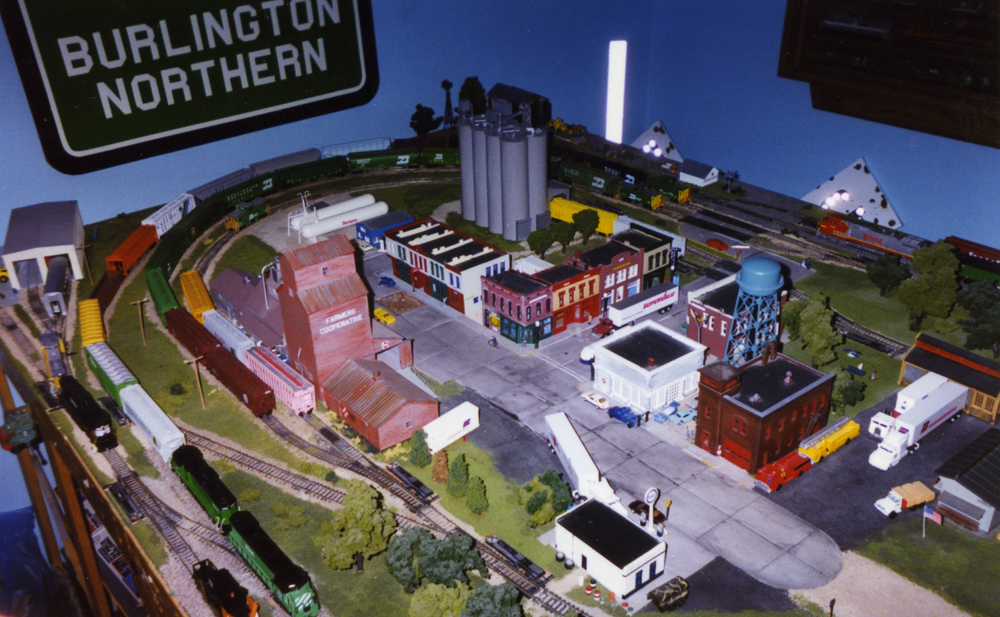
Though I enjoyed photographing full-size trains as a teenager, I took very few images of my layout. In fact, the two images shown here were taken because I needed to use up the last few frames of a disposable Fuji camera that my dad purchased to take pictures of me with Minnesota Twins players and coaches at the Eagles club when they visited Crookston as part of the team’s annual Winter Caravan. For those wondering, I met Paul Molitor, Ron Coomer, and Al Newman.
As you can see in the photo, I used MR’s Red Wing plan as inspiration. The ridge didn’t really fit the largely flat terrain of the Red River Valley of the North I was familiar with, so I omitted that. Instead, I focused on a larger downtown scene. The major rail-served customers were a grain elevator, liquefied-petroleum gas dealer, cement factory, and small transload building. The structures were from Atlas Model Railroad Co., City Classics, DPM, and Walthers.
I put a stub-end, three-track yard on the opposite side of the layout. That forced the highway that ran east-west on the original plan to make an incredibly tight (and unrealistic) pair of right-angle turns, which you can see above and to the left of the water tower. I’m sure any highway engineers reading this article are shuddering. But I was a teenager and didn’t know any better.
Partially visible along the left edge of the frame is a two-stall enginehouse, a Rix building that I shoehorned into the spot around 1997 or 1998. It was a scaled-down version of the full-size Minnesota Northern enginehouse a few miles south of my house. Not quite sure what that Amtrak Superliner car is doing there, though.
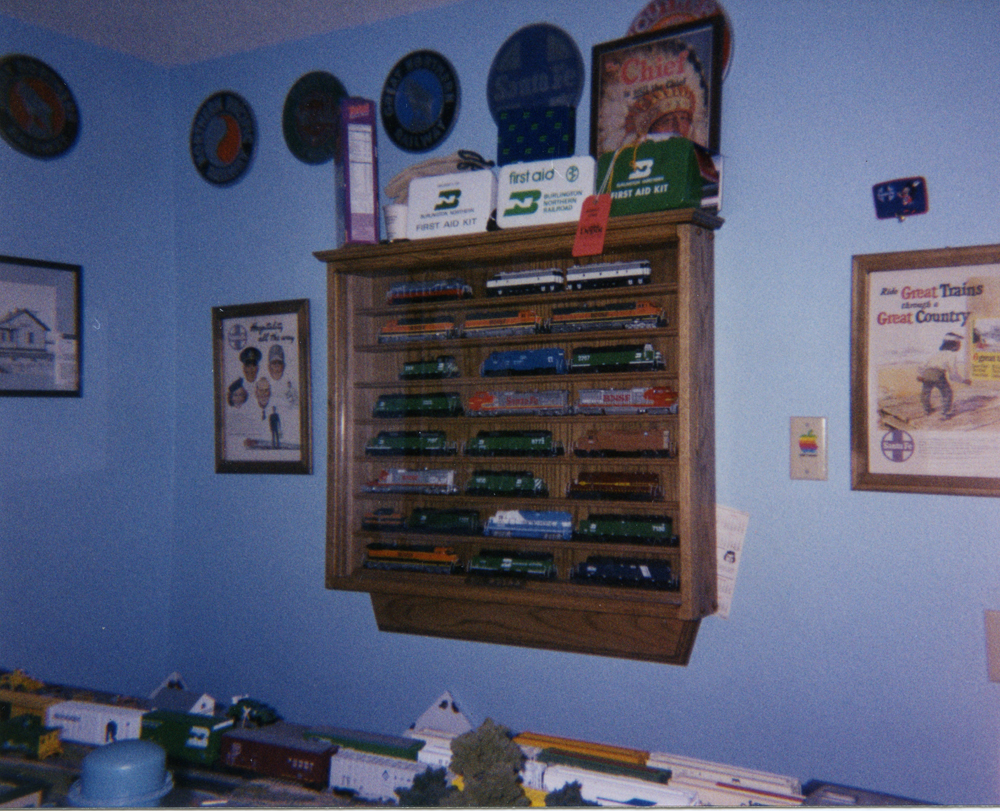
During my teenage years I was developing my skills painting HO scale locomotives and rolling stock at my dad and grandfather’s auto body repair shop. Knowing I didn’t have enough track space for all of the units, my longtime friend and then-neighbor Bill Phalen built a locomotive display case. The units shown are a mix of factory-painted offerings and some that I painted and decaled.
In the image you can also see my small collection of railroadiana that I acquired at swap meets and flea markets. The railroad heralds along the top of the wall were made by my dad under the Cast Seven label in the early 1980s. You can learn more about the heralds in this article elsewhere on Trains.com.
Epilogue — Built by Others: Cody Grivno’s Red Wing Division
In late 2001, with my college career winding down, I worked with my parents to tear down the layout. Was it a perfect model railroad? Not by a long shot. I tried to jam in too many things, the cement plant was out of place, I shouldn’t have separated the yard from the enginehouse, and the tracks were clogged with locomotives and rolling stock. In hindsight, a single Geep, a caboose, and a handful of cars would have been sufficient.
Would I consider the layout a failure? Not at all. The 4 x 8-foot model railroad gave me a place to develop an assortment of modeling skills — track laying, ballasting, structure building, and kitbashing, among many others. It also gave me a place to run my custom-decorated locomotives and freight cars. And most importantly, it provided me with many hours of fun.














The Red Wing was and is my all-time favorite 4’x8′. It has always had a special appeal to me since my childhood and I’ve seen several mentions of it on hobby websites over the years. Who doesn’t love those red and white Soo Line diesels with the occasional “bandit” scheme unit mixed in. The ridge line on this layout reminds me of the ridges or bluffs one sees when looking at the terrain around the Mississippi River. The real Red Wing, MN is located along a bank of the Mississippi. The Red Wing track plan has a lot to offer in a small package with a three track freight yard, locomotive servicing track, mainline action along with both passing and industrial trackage. I also recall MR doing a follow-up article on changing seasons on the Red Wing layout talking about how they changed the layout to a winter themed version which I think is very appropriate considering it’s location in the upper Midwest!
Excellent and informative artcle! Thanks for sharing!
Cody being a year older than me, I also built my first layout in the 1990s as a child. I got my 4×8 plan from the Atlas plans book, double track, small yard and a roundtable. It didn’t get as complete as Cody’s but it was a fun place to run my trains.
Bring back the Student Fare column
Nice job Cody! As long as you are learning new skills and having fun, that’s what I call a win/win! Keep up the great work at MR.
Michael Maurer
“Wood Hog”